Performing arts schedules are blossoming this spring, as companies and ensembles return to live productions in full swing.
SUPERWOMEN: REPERTORY DANCE THEATRE’S LINK SERIES
A regular point made in The Utah Review’s dance coverage is how and why this particular performing arts form wears the empress crown in arts and culture in Utah. Recently, that point was powerfully reinforced in SUPERWOMEN, a concert of works by Utah choreographers, Rachel Barker, Alexandra Bradshaw-Yerby and Liz Dibble. The program was part of Repertory Dance Theatre’s Link Series.
Many of Utah’s most important dance legacies endure because of the innovative vision of women. The current generation carries that torch with impressive impact, as evidenced in the five short works and an exceptional short dance film, which comprised the hour-long concert at the Rose Wagner Center for Performing Arts’ Black Box Theatre.

The opening work, set originally in 2021, was Barker’s McCall and Celine (2021), which was choreographed in collaboration with McCall McClellan, Maci Williams and Céline David. McClellan and David performed the work, which highlighted dance’s persuasive capability of interpreting what essentially is an observational study of human anthropology and sociology. Theatrical in its format, the work strings together mini episodes of connection, some immediately effective because the dancers are truly listening and engaging with each other and others not so apparent because there are distractions or disruptions that draw them away from listening as closely to each other as possible. The music effectively signaled each section, featuring selections by The Killers, Depeche Mode, Whitney Houston, Quincy Jones and Sofi Tukker.
Liz Dibble’s Zero Sum Game (2021) is a marvelous lesson of the value of genuine two-way symmetric communication. The movement elucidated all of the dos and don’ts mentioned in Jacob Malasky’s How to Win an Argument. Hannah Hardy and Brady Swanson rendered Dibble’s artistic vision with excellent results.
Dance films have become a well developed genre in short films, particularly as video art and documentary. There are film festivals dedicated to this genre. Likewise, dance films also have been curated for various festival slates, including the Fear No Film program at the Utah Arts Festival. Some are treated as installations in exhibitions at museum galleries, including the Utah Museum of Fine Arts and the Utah Museum of Contemporary Art.
Just seven minutes long, Barker’s Sedimented Here stands out as one of the most impressive of the genre that The Utah Review has screened. It truly melds two of Utah’s most substantial strengths in creative expression – dance and documentary filmmaking. Barker’s cinematic statement, filmed in Moab, synthesizes the visceral athleticism of dance with the pristine beauty of the otherworldly red rock landscape that tempts and lures many to Utah. But, something even more consequential emerges from the film for anyone who visits, absorbs and engages with this extraordinary desert landscape. Our place and presence should not compromise nor diminish the dignity and integrity of this natural wonder.
The cast and crew deserve special mentions, including dance artists McCall McClellan, Jared McClure and Abby Trinca. Ellen Maynard was DP (director of photography) and Walter Mirkss was drone operator and on second camera. Sound design was by Michael Wall and Troy Sales. Scott Cook was producer and Brook Durow was colorist. Harrison Trinca was production assistant and photographer.
Dibble’s Phoenix was a premiere featuring McClellan as soloist. The movement language and vocabulary reminded me of a quote from The Tongs and the Bones: The Memoirs of Lord Harewood (1981): “Every creative artist who goes before the public takes something private with him, something vulnerable that can be crushed and wounded.” The artist might be confounded by the paradoxes of choices that turn out to be serendipitous and those that turn out to be wrong. While we learn to trust our psyches, we also realize that sometimes taking a leap of faith will help us persevere and eventually crystallize the identity we want as creative artists. Dibble sets movement that mirrors the sounds of her music selection for the work: the Lacrimosa from Mozart’s last published work, the Requiem in D minor, as performed in a recording by the Berlin Philharmonic.
Bradshaw-Yerby’s Dear Jane (2019) is an excellent companion piece to Dibble’s Phoenix, by expanding the dimensions of the challenges dance artists can articulate in their movement language. She performed the work, which she choreographed in collaboration with Katie Daugherty. If by rejuvenating ourselves means starting over and revamping our place and identity as a creative artist, then so be it. As with every other work on the program, Dear Jane clarifies and elucidates themes effectively. The first music selection is Schubert’s Sonata for Arpeggione and Piano in A Minor from a famous recording featuring Benjamin Britten and Mstislav Rostropovich. Bradshaw-Yerby’s music palette has smart choices, including Meredith Monk’s Traces (which, incidentally she secured the license for the performance by arrangement with Boosey & Hawkes, Inc., publisher and copyright owner) and Bonnie Tyler’s signature song Total Eclipse of the Heart.
Closing the concert was Barker’s Kaleidoscope (2022), set for 12 dancers (Laura Baumeister, Abby Brumbeloe, Trung “Daniel” Do, Lily Hammons, Jonathan Kim, McCall McClellan, Morgan Phillips, Sasha Rydlizky, Charlotte Stehmeyer, Emma Talbot, Elle Taylor and Maci Williams). This is yet another compelling choreographic interpretation of a theme that other dance artists have explored relating to the chaotic, intensely competitive, socially challenging (and isolating and demoralizing) and the transitory nature of viral and buzz clout on digital media.
Barker’s contribution includes boxes as movable props for pedestals. The movement becomes a counterpoint between falling in line for fear of missing out and the urge to break out and carve a new niche, only to realize that another breakthrough trend is rapidly approaching to take over. Dance is an ideally suited creative platform for works of this type because it reinforces the necessity of intimacy and direct connection despite the ready conveniences of remote contact. Barker’s musical selections for Kaleidoscope included Dimensional Outpost and Tuscan Tickles by Stereogamous and Nick Wales; Aleph and Awake by Emptyset, and Steve Reich’s minimalism masterpiece Music for 18 Musicians: Pulses II.
SAMBA FOGO: STILL
Samba Fogo’s last concert was in the fall of 2019. In the Xiré concert, Utah’s award-winning Afro-Brazilian music and dance ensemble impressively demonstrated its artistic growth and expansion. In that program at the Jeanne Wagner Theatre of the Rose Wagner Center for Performing Arts, Samba Fogo celebrated the various spirits of Candomblé version of the spiritual foundations of the Orixá (o-ree-sha), which are nature spirits found in West African and African diasporic mythology.
For a very popular community organization that has achieved significant momentum in its artistic growth, the pandemic was particularly challenging. Nevertheless, Samba Fogo persevered, offering more than 200 Zoom classes in the interim. And, the group just recently released its debut album O Fogo Brilha (The Fire Shines) with original songs and arrangements.
Several of the tracks were featured in Samba Fogo’s electrifying (and fiery) return to the stage this month in Still. The concert was exhilarating in set pieces that ran the gamut of the emotional spectrum. It was a program of thanksgiving. It was a program of commemoration. It was a program of cultural empowerment and identity. It was a program of the consummate priority of preserving earth’s natural integrity and dignity. The interplay of spirituality and mystery with the suave confidence and sultry flavor of Brazil’s most well-known Carnaval delighted audience members who leapt frequently out of their seats. And, of course, fire was prominent in several of the evening’s most exciting numbers.
No question, this was among the top handful of Samba Fogo’s sharpest, most finely polished performances – from the dancers to the strings and drumming band. The concert opened with Return, honoring the four sacred elements of Earth, Air, Fire and Water, with choreography by Lorin Hansen, the company’s artistic director, and music by Mason Aeschbacher, Samba Fogo’s music director.
Appropriate as a statement of personal positivity and empowerment, Alafia, featuring guest dance artist Rosangela Silvestre, firmly anchored the bar of performance quality which presided throughout the entire concert. Samba Fogo regularly brings in artists who specialize in the musical and dance technique and roots of Afro-Brazilian culture. Silvestre has choreographed and performed across the world, bringing her eponymous dance technique to ensembles specializing in traditional dances of Africa, South America and other cultural diasporas.
The Oak heralded an upcoming community event, where Samba Fogo artists will plan the Chinkapin Oak at the Utah Cultural Celebration Center in a dance-planting ceremony, accompanied by live music. The April 22 event also is made possible by Tree Utah which donated the oak. Silvestre returned as soloist for Iroko, honoring the tree spirit from the ancient roots of the Orixá tradition. In between Alma Livre (Free Soul) is another Samba Fogo original song, composed by George Edgar Brown with choreography by Hansen and the company dancers.
Your Sweater, a song from the company’s debut album put the fine punctuation point on the ensemble’s outstanding artistic standards. Magalenha, the Brazilian song composed by Sergio Mendes and made famous by Carlinhos Brown, did likewise, in dance honoring northeast Brazil’s Xaxado tradition.
Hansen offered her own signature solo, Malandro do Tambor Chamejante, a performance that proved why she won the world Malandro Samba championship. She accompanied herself on the tamborim drum and dance to the song Malandro, written by Jorge Aragão and Joao Batista de Alcantra, and made famous by singer Elza Soures, who recently passed away.
The Malandro style continued in Cadência Do Samba (“I want to die in the beautiful cadence of Samba”), which Hansen choreographed. This piece won top honors in a unanimous jury decision at the 2019 International Samba Congress. The segue was just as gratifying in the life-affirming Casulo, which featured Silvestre as soloist and music by Aeschbacher.
Ignite mesmerized audiences, bringing all of the elements that have made Samba Fogo concertgoers lifelong followers of the ensemble. The piece was inspired by Xangô, the Orixá god of fire, drums, thunder and lightning. George Edgar Brown contributed the string arrangement while Hansen and Aeschbacher arranged the drum music. The company’s drum program has advanced significantly in the last several years and their performance highlighted just how far that progress has traveled.
The Carnaval energy was amped in Frevo Mulher, another dance with roots in northeastern Brazil featuring a song by Ze Ramalho. The dancer wears a shirt adorned with the flag of the Brazilian state of Pernambuco, which is known for the country’s largest Carnaval celebration. This segued beautifully into Aquarela Brasileira, with all of the costumes, adornments and features of Brazil’s “watercolor palette,” accompanied by Hansen’s arrangement of music and song by Silas De Oliveira. And no Samba Fogo concert will ever be complete without the company’s theme song, Enredo Do Samba Fogo, composed by Brown. The lyrics truly match the entire spirit of the Still concert:
É O Samba, É O Fogo, O Samba Fogo Arrebate O Coração. It is Samba. It is Fire. Samba Fogo, Captures the Heart. The fire catches, it’s contagious. It is happiness, it is euphoria, it is passion.
Samba Fogo indeed provided a perfect artistic barometer of coming out of the pandemic, stronger, better and more enriched than ever in its cultural mission and artistic expression.
OUT OF THE SILENCE AND RED DESERT ENSEMBLE: WESTMINSTER COLLEGE
A rare musical treat with a couple of notable Utah premieres came in Out of the Silence, a fascinating multimedia event highlighting female composers who were pioneers in electro-acoustic and electronic music.
The April 3 event at Westminster College’s performing arts center was in three parts, making for a hugely informative and enjoyable Sunday afternoon. Red Desert ensemble members Devin Maxwell and Katie Porter opened the program with two short works: Nina C Young’s Heart Throb (2019) for snare drum and electronics and Michelle Lou‘s Telegrams (2017) for bass clarinet and electronics.
Red Desert’s performing catalog is exceptional for its representation of works that appear at first glance to be minimalistic but are, in fact, effective at drawing the listener closer to a fully fledged point of absorbed focus and contemplation. The control and discipline required to maximize the effect are incredibly demanding of the performer. Maxwell’s delight in performing Heart Throb transmitted clearly the composer’s intentions. In this instance, the instrument has a transducer and contact microphone which produces the throbbing sensation. The work, therefore, transforms our conventional perceptions about what the snare drum is able to accomplish and how it could be played.
Likewise, Porter excels at works that are meticulous in controlled execution and patience and where the sound levels are quiet but yet fully discernible by the listener. In the darkened space, her performance of Telegrams exemplified the skills involved. The work includes a live audio processing app that captures every intentional and incidental sound in the performing space. The listener’s physiological response? I could feel my breathing rhythm relax to a point that I would normally envy before settling into bed for sleep.
The second part of the event comprised the Utah premiere screening of the 2020 documentary film Sisters with Transistors, directed by Lisa Rovner. Rich in archival footage and interviews with some of the highlighted subjects, the film chronicles the pioneering work of female composers in electronic music. Some of the names are immediately familiar including Pauline Oliveros, Delia Derbyshire and Wendy Carlos but the film also introduces viewers to others including Clara Rockmore, Daphne Oram, Bebe Barron, Maryanne Amacher, Suzanne Ciani, Laurie Spiegel and Éliane Radigue.
The 86-minute film overflows with musical riches and insights. Rockmore, a Lithuanian native, is regarded as the world’s greatest performer of the theremin. At 90, Radrique is interviewed in the film, having lived long enough to see her music be performed and validated as essential to being part of the musical canon. Many of these composers started working in electronic music and with computers long before their male counterparts. It will strike some viewers as acutely ironical that these female pioneers had put the A (Art) into STEM (Science, Technology, Engineering and Mathematics) long before the concept became widely popular in educational initiatives designed to narrow the gender gap in these areas. One practical reason why female composers dominated the early generation of electro-acoustics and electronic music was that this was a genre that did not attract male composers for lack of interest or fear they would never gain traction or visibility (think commissions). So, it was left to become the domain of female composers. Rovner’s superb film makes it clear just how enormous their contributions were to proving the technological concept and creative potential of a musical practice, which has become common in the 21st century and now regularly commands commissions.
Rounding out the event was another Utah premiere, a listening party of Radique’s Triptych, now regarded as one of the greatest examples of electronic music ever produced. The 1978 work, which was created in part by using an ARP 2500 synthesizer. is in three clear sections and was recorded in Radrique’s studio in Paris. The piece was commissioned by Douglas Dunn to be set for choreography, of which a portion was premiered. As a recent New York Times feature noted on the occasion of Radrique’s 90th birthday, “this three-part composition, with its great humility and contemplative simplicity, heralded a new period of work and was the first in a series of masterpieces inspired by Tibetan Buddhism.”
Indeed, sitting with a glass of wine in the reception area of the performing arts center, the Radrique work is therapeutic for uncluttering the mind and organizing one’s thoughts or anticipations for the next day. In one section of Triptych, the sensation is like the recorded sound of what a fetus would hear in the mother’s womb. That sound often has been associated with why the human ear responds to deep bass rhythms and other subtle, nuanced forms of beats that are discernible but never excessively loud or soft.
HANNAH SAVES THE WORLD: DESERET EXPERIMENTAL OPERA COMPANY
A best-selling children’s book by a Logan, Utah author has become a children’s rock opera with the same title as the book — Hannah Saves the World — in a fabulous production created by the Deseret Experimental Opera Company (DEXO).
The 45-minute opera, based on A.M. Luzzader’s book, is DEXO’s first production coming out of the pandemic and its first performances were presented at the Viridian Events Center adjacent to the West Jordan Branch of the Salt Lake County Library System and at Westminster College.
The thoroughly entertaining opera has serious performing chops, which bring Luzzader’s charming story about Hannah, a girl detective who takes the initiative to solve problems in her community, to satisfying results. The characters of Hannah and her sidekick Mia were brought to life by dance artists Haleigh Larmer and Bailey Sill, along with movement direction by Westminster College’s Allison Shir. Emily Nelson and Elijah Hancock lent their operatic voices to the weird alien duo of Aaxtchu and Brian. Florian Alberge rounded out the cast, often as the comic foil. The characters included a dog and the individuals considered suspects in the case that Hannah and Mia are out to solve. Not even an alien invasion overwhelmed Hannah’s reserves of resourcefulness.
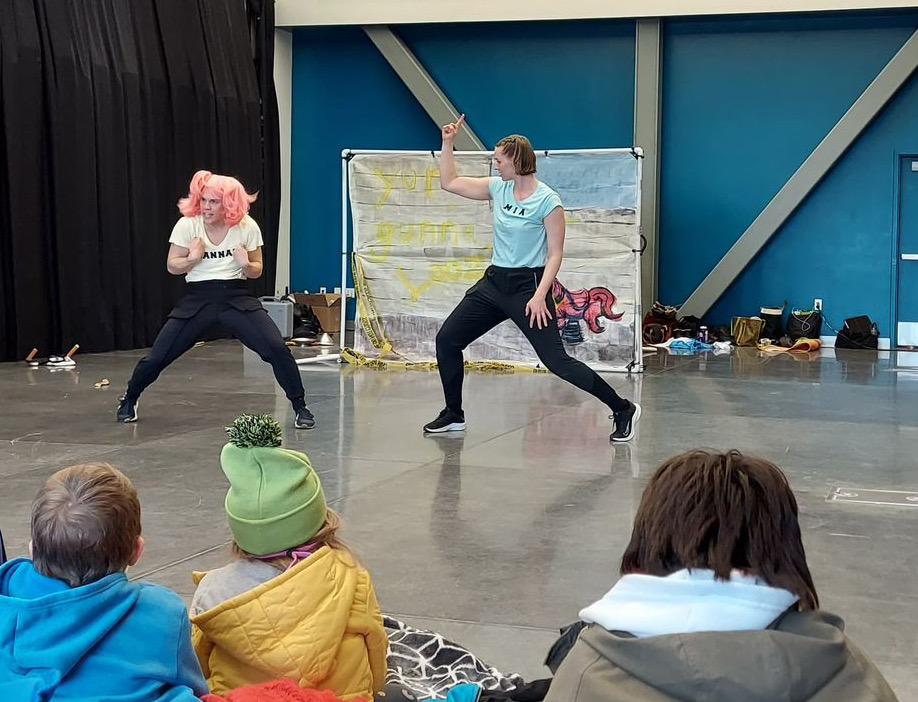
The opera leverages the astute elements that Luzzader incorporates into the story. This includes opportunities for interactive moments in the opera, such as discovering every palindrome that pops up in the narrative. Yes, more Taco Cat, please. Local musician and composer Jacob Rosenzweig provided a hefty, on-point musical score. This rock opera deserves a solid production run of performances for young viewers and their families.
For more information, visit the DEXO website and for this and other children’s book titles, visit Luzzader’s website.


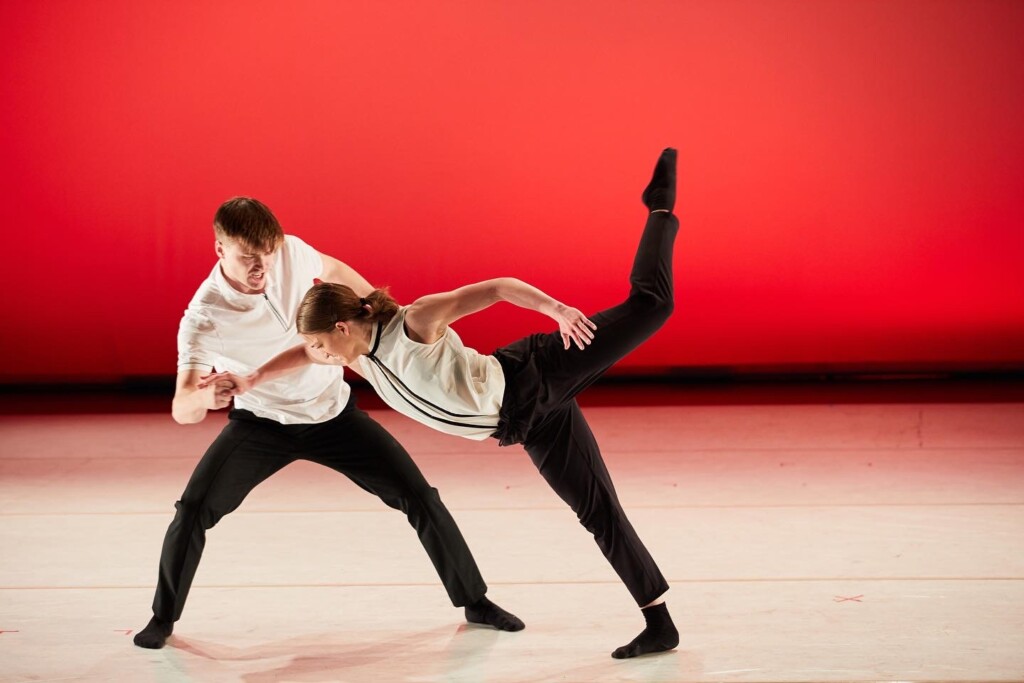


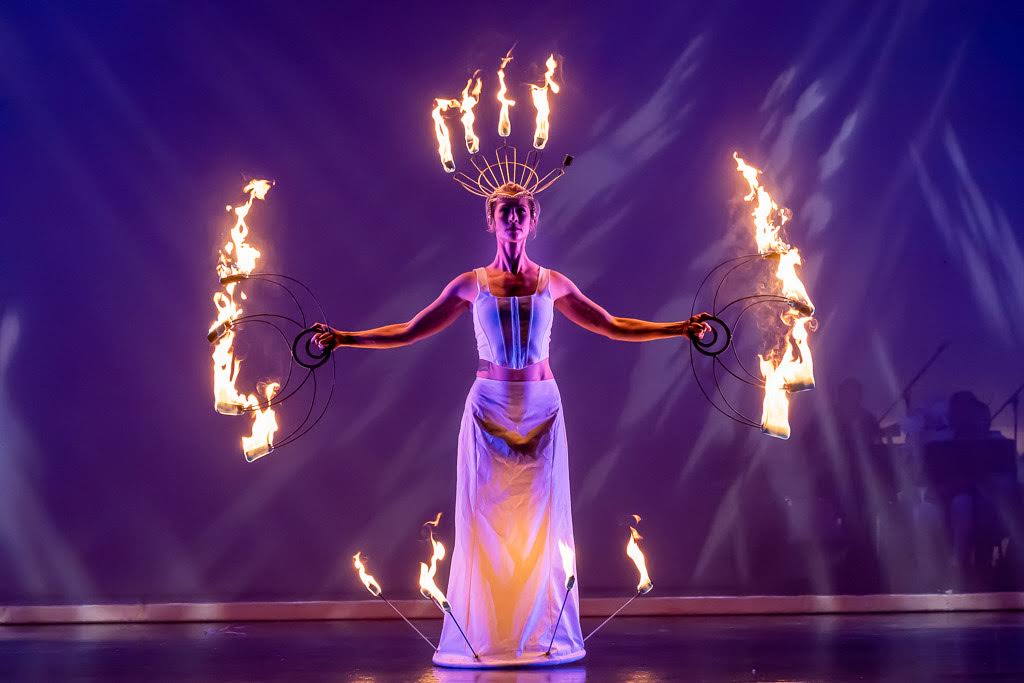
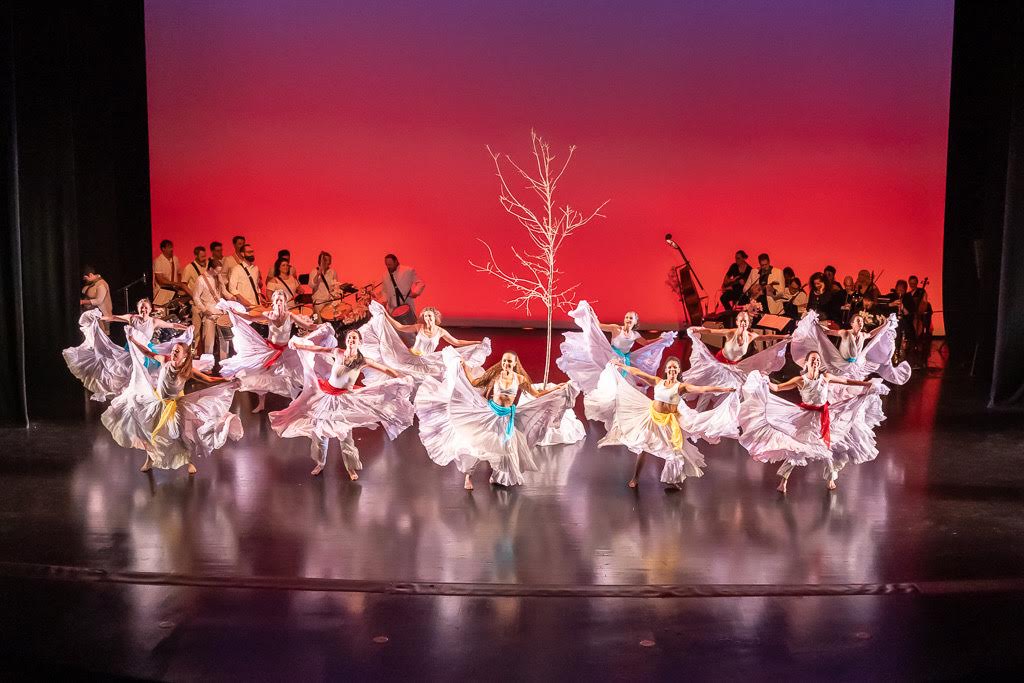


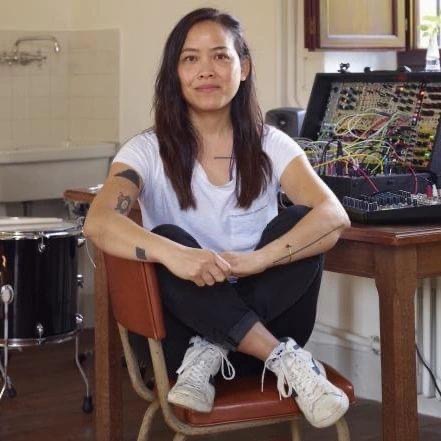

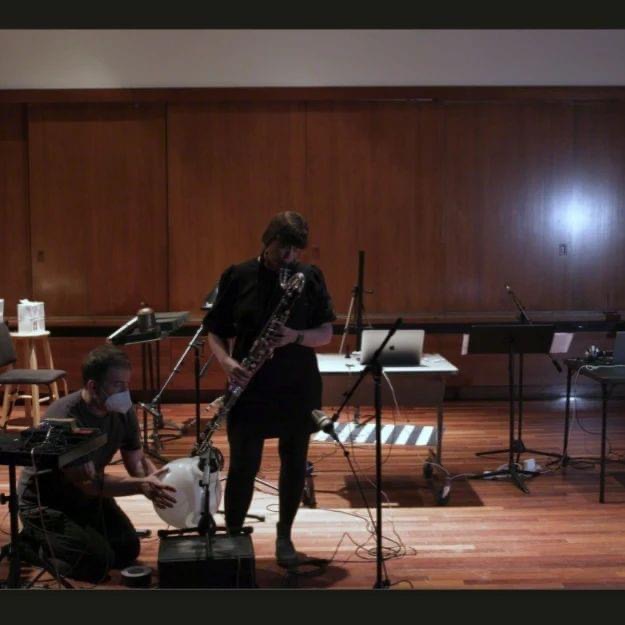
1 thought on “Early spring bounty: SUPERWOMEN dance concert, Samba Fogo’s Still, Out of the Silence featuring Red Desert, DEXO’s children rock opera Hannah Saves the World”